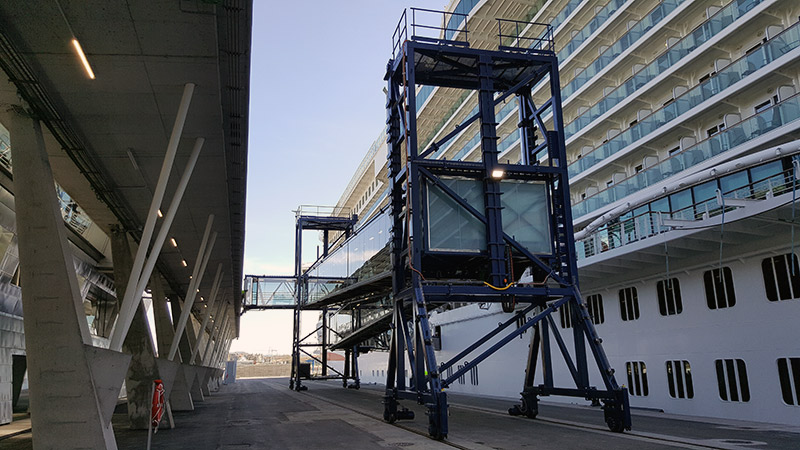It has been gratifying to be part of a major forward-thinking project, and even more so with the recognition of our work on the Bilbao port passenger gateway, an infrastructure developed to make Bilbao’s port more competitive, according to its Port Authority, whose mobile gateway has been designed by Prosertek.
Our port equipment, which links the cruise terminal to the ships and boats, has been described as “an avant-garde piece of engineering” and “the most modern in the world” by the company Hempel, in the latest issue of their magazine. Its mobile platform (finger or gangway), which is similar to that used in airports, enables passengers to directly, comfortably and safely access the terminal and/or ship.
This company, specialising in paints and coatings for nautical and naval markets among others, has been in charge of our gateway’s exterior coating protection system and worked with Prosertek, along with other local applicators, on the application of the corresponding design that protects this port equipment, which is exposed to a highly corrosive environment.
An investment to remain at the forefront
Britannia was in charge of launching this new passenger terminal last March, located at the Getxo 3 cruise ship pier. Its 330-metre span and capacity for nearly 4,000 people put the station’s and the gateway’s operation to the test an it has since seen thousands of passengers passing through the gateway and many cruise ships dock there.
The station was designed to open out onto the ships to facilitate boarding and unboarding operations as well as to guarantee passenger comfort, including those with reduced mobility. Each passenger enters the ship from the fixed gateway outside the building, allowing them to enter and exit directly and safely without having to go onto the pier at any time, thanks to our mobile gateway. And how does this work?
The top of the range mobile boarding gateway, designed and constructed by Prosertek links the fixed maritime terminal with the ship (a moving element). Its structure, as described above, is similar to airport gateways, except for its added mobility to adapt to all levels of high and low tide, the movements of the cruise ship (even in the most adverse weather conditions), as well as to the size of the boat itself. This therefore allows safe access for all passengers.
Its two tunnels and three modules with interactive information systems and finishes ensure a more pleasant passenger passage. It also includes controls and systems that optimise energy efficiency, allowing the gateway to meet environmental protection criteria. We cannot end without mentioning the mobile boarding gateway’s ability to stretch across the 170-metre fixed maritime terminal gateway, adapting to any berthing layout, highlighting just how adaptive it is.



Comments are closed.